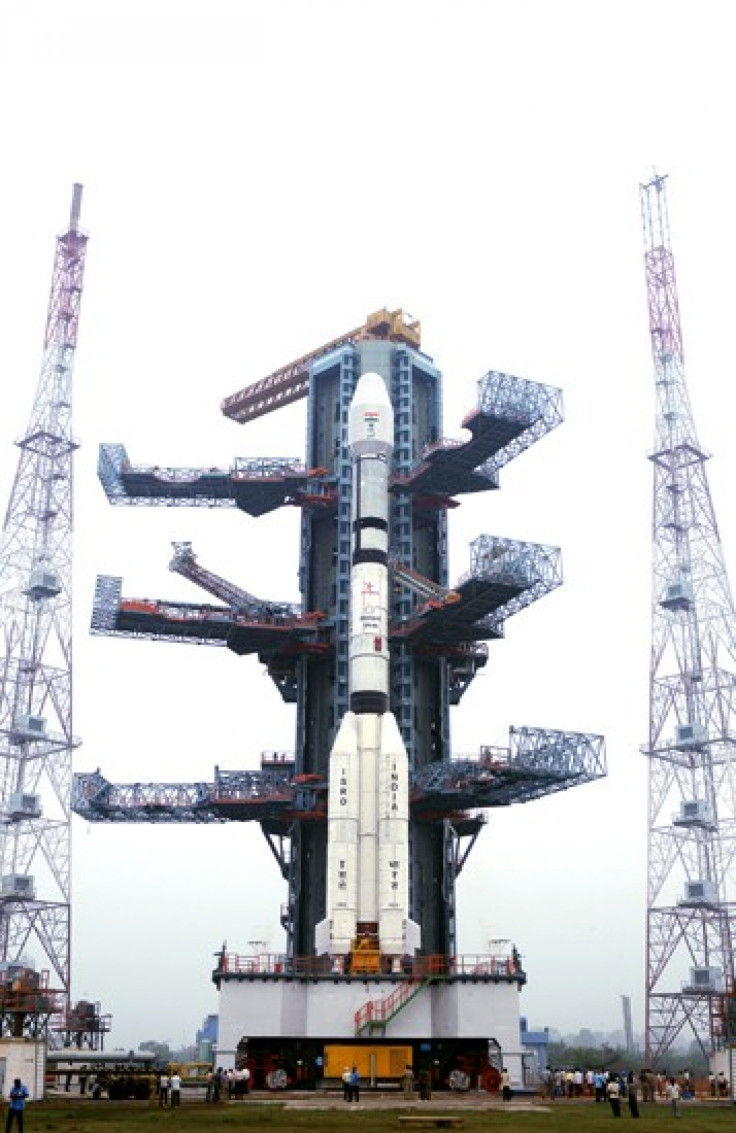India Announces Two Rocket Tests Before 2014 Moon Mission Launches

Following the successful launch of its Risat-1 satellite Thursday, India's space agency announced that it will test two of its heavy rockets prior to its planned 2014 moon mission.
The Indian Space Research Organization plans to launch two Geosynchronous Satellite Launch Vehicle rockets within six months of each other. If they are successful, the ISRO will move forward with its second unmanned moon mission, Chandrayaan-2, in collaboration with the Russian Federal Space Agency.
The launch of Chandrayaan-2 will be in 2014. We are working towards it. It would be on a GSLV, after we launch two GSLVs within an interval of six months, ISRO chief K. Radhakrishnan said, the Hindu newspaper reported.
Radhakrishnan said India will launch a GSLV in September or October of this year, according to the Times of India.
The Chandrayaan-2 mission will carry a lunar orbiter and rover, as well as a lander that has been developed in Russia. This will be India's first attempted moon landing -- but it will be without astronauts.
India's first unmanned space mission Chandrayaan-1 successfully launched in October 2008, delivering both a lunar orbiter and an impact probe into space.
India had two successive failed launches of GSLVs in 2010, which threatened to set back the Chandrayaan-2 mission.
As a rising global power, India's space program is as much a demonstration of its growing economic might as it is of its technological prowess.
Asian rival China has also invested heavily in its space program, planning an unmanned lunar landing by 2020 and putting a human on the moon by 2030.
India has yet to independently launch an astronaut into space. Only the U.S., Russia (currently, and formerly as the Soviet Union) and China have successfully conducted human spaceflight.
India is planning its first manned spaceflight mission for 2016.
© Copyright IBTimes 2024. All rights reserved.











